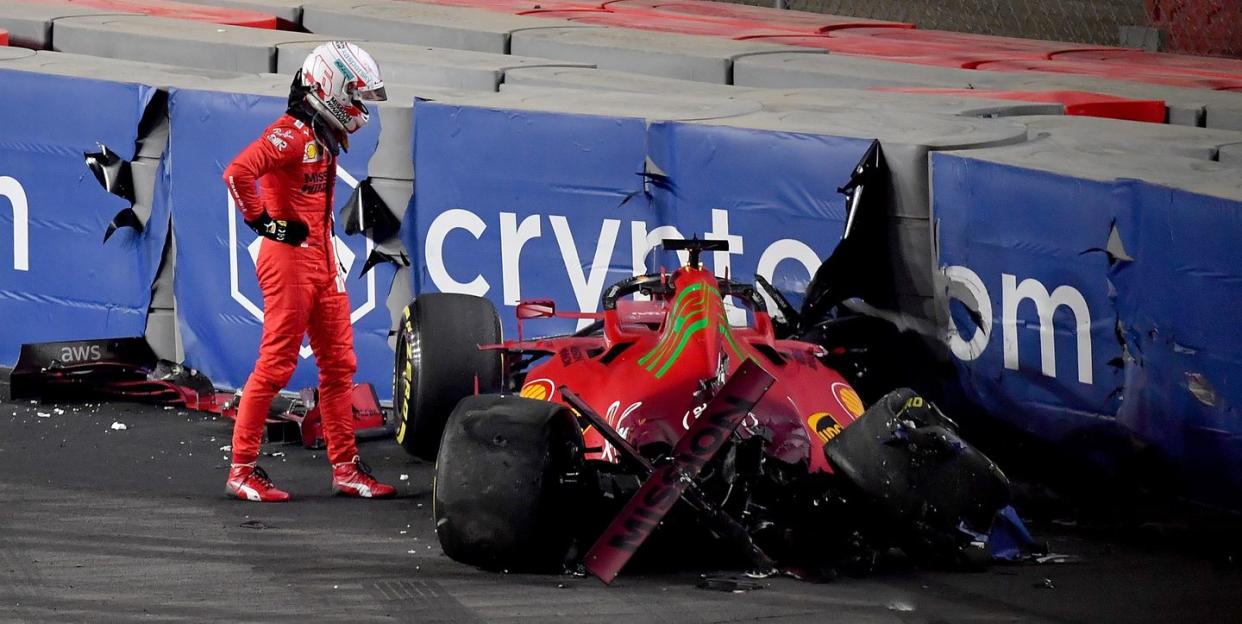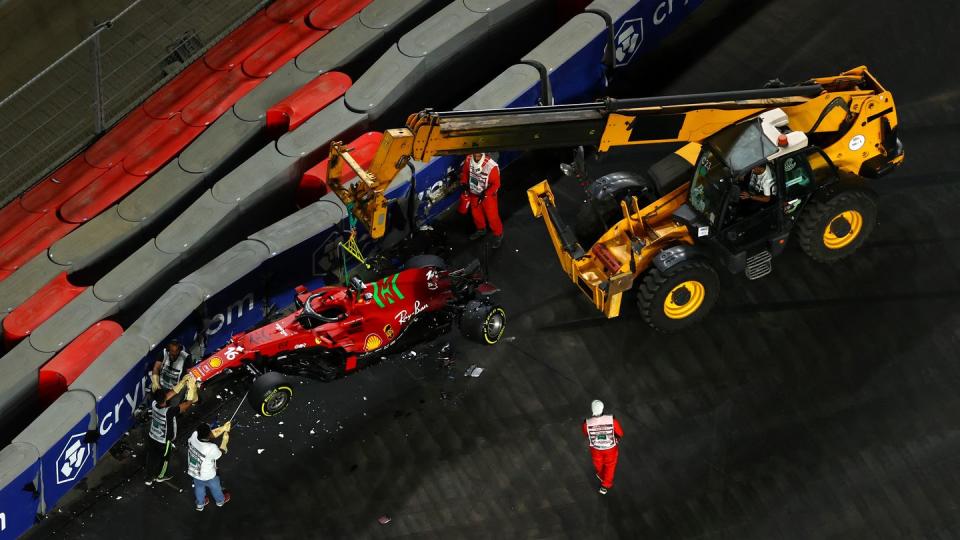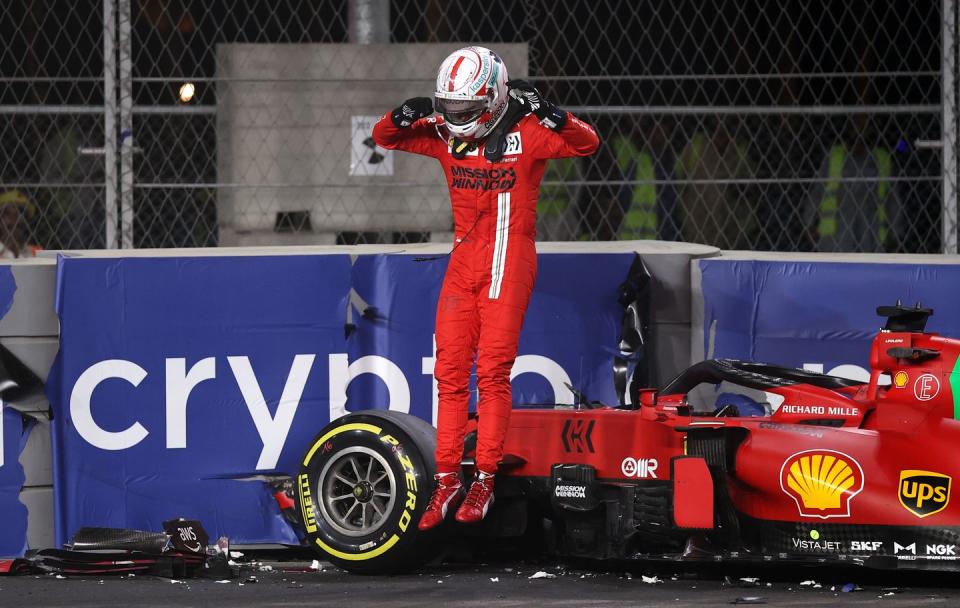Charles LeClerc Just Had a Nasty Crash in Practice for the Saudi Arabian Grand Prix

- Oops!Something went wrong.Please try again later.
Free Practice 2 for the Saudi Arabian Grand Prix was cut short today as Charles LeClerc crashed out on turn 12 in a spectacular incident, bringing new attention to a new circuit already facing safety scrutiny.
Charles Leclerc went off into the barriers at Turn 22, causing an early end to FP2
Thankfully he was able to get out of the car himself and confirm he was ok#SaudiArabianGP 🇸🇦 #F1 pic.twitter.com/wif6Pau2N4— Formula 1 (@F1) December 3, 2021
The 24-year-old driver walked away from the high-speed incident, a credit in no small part to F1's movable and segmented TecPro barriers at the new-for-2021 Jeddah Corniche Circuit. But not everyone is happy with the track itself.
It features high maximum speeds, long full-throttle sections, and very little runoff. In addition to the TecPro barriers, sturdier SAFER barriers, like those used in oval racing, are implemented on the track's faster sections. About 80 percent of the track is taken at full throttle. Former F1 champ Damon Hill questioned it on the F1 Nation podcast, noting some of these concerns.

“I mean, there’s not much run-off," he said, per GP Blog. "They’ve got the SAFER barrier that they’re using, which is like they do in Indianapolis, but it’s gonna be very high speed and not much run-off. So [it’s] high-risk, high jeopardy. That always gets your attention as a racing driver.”
Red Bull team boss Christian Horner described the track as "insane," with drivers Carlos Sainz Jr. and Pierre Gasly asking marshalls to be fast to incidents to avoid pile-ups around blind corners, according to Autosport.
Still, the circuit's designer Carsten Tilke, son of famous and/or infamous track designer Herman Tilke, stands behind it. He notes that the track complies with the highest tier of FIA standards and has gone through the proper certification process. In an interview with MotorSport Magazine, he says that while street circuits require some more vigilance, the FIA has confirmed what he believes from his design work: that the track is safe.
“We need to make it challenging, we need to make it thrilling and I think this is what the people want," he said. "The FIA check everything, do the safety inspections, the safety simulations–which we also do in house–but at the end, the decision lies at their table."

You Might Also Like

